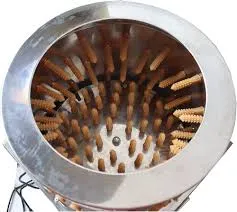Innovative Poultry Farming Solutions with Automatic Chicken Housing Systems
Dec . 09, 2024 20:36 Back to list
Innovative Poultry Farming Solutions with Automatic Chicken Housing Systems
The Rise of Automatic Chicken Cages Revolutionizing Poultry Farming
In recent years, the poultry farming industry has witnessed a remarkable transformation, largely driven by technological advancements. Among these innovations, automatic chicken cages have emerged as a game-changing solution for farmers around the globe. These automated systems not only enhance the efficiency of chicken farming but also address several welfare concerns associated with traditional farming methods.
Automatic chicken cages, designed with the latest technology, provide a more controlled and efficient environment for raising poultry. The primary advantage of these systems lies in their ability to automate routine tasks that would otherwise require substantial manual labor. Feeding, watering, and cleaning become streamlined processes, allowing farmers to focus on other critical aspects of their operations. For example, integrated feeding systems ensure that chickens receive the right amount of feed at prescribed intervals, which promotes optimal growth and reduces waste.
One significant concern in traditional poultry farming is the potential for disease outbreaks. In crowded, unsanitary conditions, diseases such as avian influenza can spread rapidly, threatening not only the health of the chickens but also the livelihood of farmers. Automated chicken cages can help mitigate these risks by maintaining clean environments. Many of these systems incorporate features like automatic ventilation and temperature control, which can significantly reduce the incidence of disease and support healthier, more productive flocks.
Welfare is another critical factor in modern poultry farming. Traditional battery cages have often been criticized for neglecting the welfare of hens due to limited space and poor living conditions. Automatic chicken cages, however, can be designed to provide more room for each bird, as well as opportunities for natural behaviors like nesting and foraging. Some advanced systems even include enriched environments where chickens can interact, scratch, and engage in social behaviors, addressing concerns from animal welfare organizations and improving the overall quality of life for these animals.
automatic chicken cage

Moreover, the environmental benefits of using automatic chicken cages cannot be overlooked. With the growing demand for sustainable farming practices, these systems can help reduce the ecological footprint of poultry production. Automated waste management systems can efficiently collect and process manure, thereby minimizing pollution and optimizing resource use. Additionally, by controlling the feed conversion ratio—how efficiently chickens convert feed into body mass—these systems contribute to reducing the overall resource input required for poultry farming.
Another important aspect of automatic chicken cages is data collection and monitoring. Advanced systems come equipped with sensors and software that gather data on various parameters such as temperature, humidity, and feed consumption. Farmers can analyze this data to make informed decisions that improve flock management and productivity. The adoption of big data and analytics in poultry farming represents a significant leap forward, empowering farmers to optimize their operations and respond to challenges in real time.
Despite the numerous benefits, the transition to automatic chicken cages does not come without its challenges. Initial investment costs can be high, and not all farmers may have the resources or technical expertise to implement such systems effectively. Moreover, there is a need for ongoing maintenance and support to ensure these systems function optimally over time. However, as technology continues to advance and become more accessible, the barriers to adoption are expected to diminish.
In conclusion, automatic chicken cages present a transformative opportunity for the poultry farming industry. By improving efficiency, enhancing animal welfare, minimizing environmental impact, and leveraging data for better decision-making, these systems represent the future of poultry production. As the global population continues to grow and demand for poultry products rises, embracing innovative solutions like automatic chicken cages will be essential for sustainable farming practices that meet both economic and ethical standards. The journey toward a more efficient and humane poultry industry is underway, and automatic chicken cages are at the forefront of this promising revolution.
-
Hot Sale 24 & 18 Door Rabbit Cages - Premium Breeding Solutions
NewsJul.25,2025
-
Automatic Feeding Line System Pan Feeder Nipple Drinker - Anping County Yize Metal Products Co., Ltd.
NewsJul.21,2025
-
Automatic Feeding Line System Pan Feeder Nipple Drinker - Anping County Yize Metal Products Co., Ltd.
NewsJul.21,2025
-
Automatic Feeding Line System - Anping Yize | Precision & Nipple
NewsJul.21,2025
-
Automatic Feeding Line System - Anping Yize | Precision & Nipple
NewsJul.21,2025
-
Automatic Feeding Line System-Anping County Yize Metal Products Co., Ltd.|Efficient Feed Distribution&Customized Animal Farming Solutions
NewsJul.21,2025






